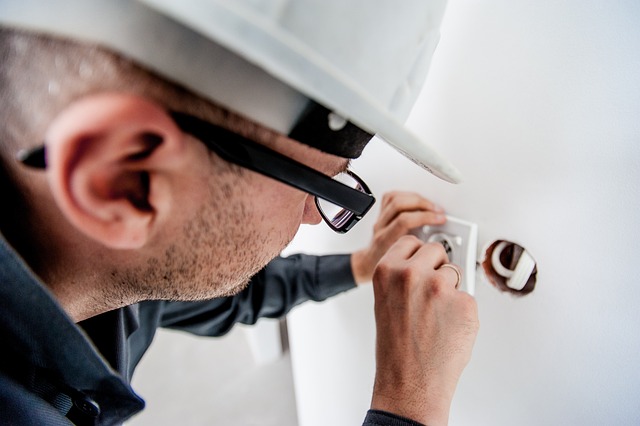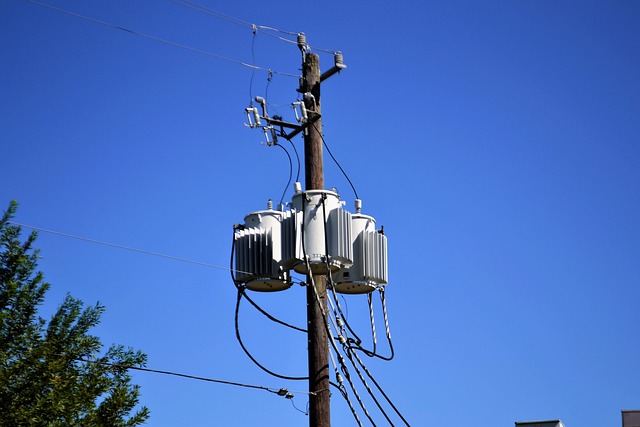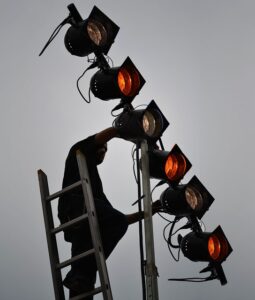Electrician’s Guide to Diagnosing and Fixing Electrical Problems
When electrical issues arise, such as frequently tripped circuit breakers or flickering lights, it's crucial to engage a professional electrician for safe and effective problem-solving. These symptoms often indicate underlying wiring or panel problems that can pose significant safety risks. An …….

When electrical issues arise, such as frequently tripped circuit breakers or flickering lights, it's crucial to engage a professional electrician for safe and effective problem-solving. These symptoms often indicate underlying wiring or panel problems that can pose significant safety risks. An experienced electrician will accurately diagnose the root cause by examining your system with specialized tools, ensuring adherence to safety standards and compliance with current codes. Regular inspections by a certified electrician are key to preventing minor issues from escalating into major emergencies. Professional intervention not only ensures your electrical system operates efficiently but also protects your home's integrity and your personal safety. By addressing potential hazards like warm receptacles, unresponsive switches, or noisy devices, an electrician can perform necessary repairs, from tightening connections to replacing components, thus maintaining a safe and reliable electrical environment in your home. Engaging an electrician for such services is essential for both the immediate resolution of issues and long-term prevention of more severe electrical problems.
When faced with electrical malfunctions, understanding the root cause is paramount for safe and effective resolution. This article serves as a comprehensive guide, breaking down common issues from faulty switches to complex wiring problems, and providing step-by-step troubleshooting techniques. From identifying signs of wear in your home’s circuit breakers to understanding the importance of proper insulation and grounding, readers will gain valuable insights into maintaining their electrical systems efficiently. With a focus on DIY solutions for minor issues and knowing when to call a professional electrician, this piece ensures you can navigate electrical troubles with confidence. Additionally, it highlights the necessity of regular maintenance by qualified electricians and the benefits of upgrading your home’s system to meet modern energy demands. Whether it’s resolving power outages or ensuring your appliances run smoothly, this article equips you with the knowledge to tackle electrical challenges head-on.
- Understanding Common Electrical Issues
- Step-by-Step Guide to Troubleshooting Circuit Breakers
- Identifying and Resolving Faulty Switches and Outlets
Understanding Common Electrical Issues

When encountering common electrical issues, the expertise of an electrician is invaluable for effective troubleshooting and resolution. Many problems stem from faulty wiring, overloaded circuits, or outdated electrical panels. Symptoms such as flickering lights, persistent tripped circuit breakers, or repeatedly blown fuses are indicative of underlying issues that may range from minor overloads to significant safety hazards. A trained electrician can identify these signs and pinpoint the exact cause, whether it’s a short circuit, a loose connection, or a component failure within the system. Homeowners should not attempt to resolve such matters without professional guidance due to the risks involved with electrical work. An electrician will have the necessary tools and knowledge to safely address these issues, restore functionality, and ensure that your electrical system is both safe and up to code. Regular maintenance checks by a qualified electrician can also prevent minor problems from escalating into major disruptions or dangerous situations. Understanding common electrical issues and knowing when to call in a professional can save you time, money, and potentially serious complications down the line.
Step-by-Step Guide to Troubleshooting Circuit Breakers

When encountering issues with your circuit breaker, it’s essential to approach the situation methodically to ensure both safety and efficiency. A certified electrician will often start by examining the circuit breaker’s panel for any obvious signs of damage or overheating. If everything appears normal, the next step is to reset the tripped circuits one by one, observing if any specific circuit causes the breaker to trip again. This can help pinpoint which circuit or appliance is drawing more power than it should, potentially leading to an overloaded condition that triggers the breaker.
If resetting the circuits does not resolve the issue, the electrician will proceed to inspect each circuit’s corresponding electrical load. They will check for short circuits, ground faults, or any other abnormal conditions within the circuits. This may involve using specialized tools like a multimeter or a circuit analyzer to measure voltage and current flow accurately. If a fault is detected, the electrician will correct it by either repairing or replacing faulty components, such as wires, switches, or outlets. It’s crucial during this process to follow all safety protocols, including turning off the power supply at the main breaker before handling any electrical components. By carefully following these steps, an electrician can effectively troubleshoot and repair malfunctioning circuit breakers, restoring electricity to your home safely and efficiently.
Identifying and Resolving Faulty Switches and Outlets

When encountering electrical issues with switches or outlets, engaging the services of a professional electrician is often the most prudent course of action. Signs of malfunction can include flickering lights, warm to the touch receptacles, or switches that are unresponsive or make unusual noises. An experienced electrician will first conduct a visual inspection to identify obvious signs of wear or damage. This may involve checking for loose connections, corroded terminals, or any visible deterioration.
Upon identifying the problem, the electrician will proceed with the necessary repairs. For instance, a switch that is not functioning properly might require tightening of its connections or replacing of its internal components. Similarly, an outlet that is warm to the touch could indicate an overload or a loose connection within the receptacle itself, which the electrician can correct by either redistributing the circuit load or repairing the faulty wiring. Throughout this process, safety is paramount; electricians are trained to work with electrical systems and understand the importance of adhering to all relevant safety standards and codes. It’s always advisable to address electrical issues promptly to prevent potential hazards and ensure the longevity and efficiency of your home’s electrical system.
When encountering electrical malfunctions, prompt identification and resolution are key to maintaining safety and functionality in your home or workplace. This article has demystified common electrical issues, offering a clear, step-by-step guide to troubleshoot circuit breakers, and practical advice for addressing faulty switches and outlets. For effective and safe problem resolution, consulting a professional electrician is always advisable. Their expertise ensures that your electrical systems operate efficiently and without risk. With the knowledge from this article, you are now equipped to approach electrical challenges with confidence or recognize when expert assistance is necessary. Remember, safety should always be your top priority when dealing with electricity.







